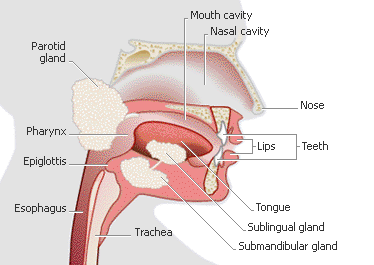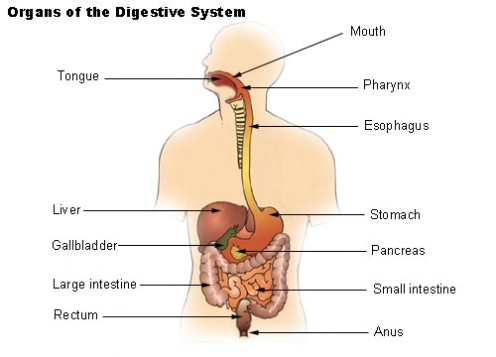WHAT IS HEALTH ? by DR.Ramamoorthy Selvakumar (best motivational books .txt) 📖

- Author: DR.Ramamoorthy Selvakumar
Book online «WHAT IS HEALTH ? by DR.Ramamoorthy Selvakumar (best motivational books .txt) 📖». Author DR.Ramamoorthy Selvakumar
Continued from above] . . . but do not have food pass through them. Accessory organs of the digestive system include the teeth, tongue, salivary glands, liver, gallbladder, and pancreas. To achieve the goal of providing energy and nutrients to the body, six major functions take place in the digestive system:
Ingestion Secretion Mixing and movement Digestion Absorption Excretion It Is System
Continued from above . . . but do not have food pass through them. Accessory organs of the digestive system include the teeth, tongue, salivary glands, liver, gallbladder, and pancreas.
To achieve the goal of providing energy and nutrients to the body, six major functions take place in the digestive system:
Ingestion Secretion Mixing and movement Digestion Absorption Excretion Mouth
Food begins its journey through the digestive system in the mouth, also known as the oral cavety. Inside the mouth are many accessory organs that aid in the digestion of food—the tongue, teeth, and salivary glands.
Teeth chop food into small pieces, which are moistened by saliva before the tongue and other muscles push the food into the pharynx.

The Teeth are 32 small, hard organs found along the anterior and lateral edges of the mouth. Each tooth is made of a bone-like substance called dentin and covered in a layer of enamel—the hardest substance in the body.
Teeth are living organs and contain blood vessels and nerves under the dentin in a soft region known as the pulp. The teeth are designed for cutting and grinding food into smaller pieces.

The tongue is located on the inferior portion of the mouth just posterior and medial to the teeth. It is a small organ made up of several pairs of muscles covered in a thin, bumpy, skin-like layer.
The outside of the tongue contains many rough papillae for gripping food as it is moved by the tongue’s muscles. The taste buds on the surface of the tongue detect taste molecules in food and connect to nerves in the tongue to send taste information to the brain.
The tongue also helps to push food toward the posterior part of the mouth for swallowing.
Salivary GlandsSalivary Glands. Surrounding the mouth are 3 sets of salivary glands. The salivary glands are accessory organs that produce a watery secretion known as saliva. Saliva helps to moisten food and begins the digestion of carbohydrates. The body also uses saliva to lubricate food as it passes through the mouth, pharynx, and esophagus
The pharynx, or throat, is a funnel-shaped tube connected to the posterior end of the mouth. The pharynx is responsible for the passing of masses of chewed food from the mouth to the esophagus.
The pharynx also plays an important role in the respiratory system, as air from the nasal cavity passes through the pharynx on its way to the larynx and eventually the lungs. Because the pharynx serves two different functions, it contains a flap of tissue known as the epiglottis that acts as a switch to route food to the esophagus and air to the larynx.
The esophagus is a muscular tube connecting the pharynx to the stomach that is part of the upper gastrointestinal track.
It carries swallowed masses of chewed food along its length. At the inferior end of the esophagus is a muscular ring called the lower  esophageal sphincter or cardiac sphincter. The function of this sphincter is to close of the end of the esophagus and trap food in the stomach.
esophageal sphincter or cardiac sphincter. The function of this sphincter is to close of the end of the esophagus and trap food in the stomach.
The stomach is a muscular sac that is located on the left side of the abdominal cavity, just inferior to the diapnagram. In an average person, the stomach is about the size of their two fists placed next to each other.
This major organ acts as a storage tank for food so that the body has time to digest large meals properly.
The stomach also contains hydrochloric acid and digestive enzymes that continue the digestion of food that began in the mouth.

The small intestine is a long, thin tube about 1 inch in diameter and about 10 feet long that is part of the lower gastrointestinal tract.
It is located just inferior to the stomach and takes up most of the space in the abdominal cavity. The entire small intestine is coiled like a hose and the inside surface is full of many ridges and folds.
These folds are used to maximize the digestion of food and absorption of nutrients. By the time food leaves the small intestine, around 90% of all nutrients have been extracted from the food that entered it.
The liver is a roughly triangular accessory organ of the digestive system located to the right of the stomach, just inferior to the diaphragm and superior to the small intestine.
The liver weighs about 3 pounds and





Comments (0)